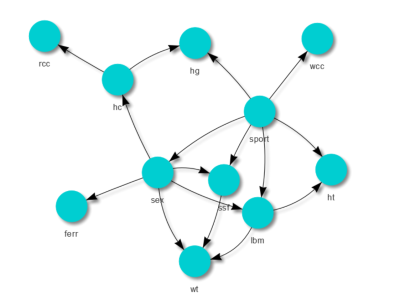The increasing global investment in EHS (Environmental, Health, and Safety) management software, projected to reach $3.1 billion by 2028, highlights how essential this technology has become. More organizations are shifting their processes to digital solutions, but what exactly makes EHS management software such a valuable tool for modern businesses?
This blog will explore the benefits of EHS management software, why it’s such a sought-after solution for organizations, and the top five reasons why unified, multi-tenant SaaS EHS management software platforms are becoming a critical part of EHS practices.
What is EHS Management Software?
To define EHS management software, it’s important to first understand EHS management itself. EHS management is a framework businesses use to manage the Environmental, Health, and Safety practices within their organization. This includes creating programs, workflows, and objectives that focus on keeping employees, their workspaces, and the surrounding environment safe.
Let’s break down the key elements of EHS:
Environmental:
Focuses on managing processes that affect environmental factors. Common goals include minimizing environmental impact and managing waste, chemicals, air emissions, and water usage.
Health:
Encompasses systems to monitor and promote the health and wellbeing of employees. This includes occupational health, wellness, industrial hygiene, and ergonomics.
Safety:
Involves programs and systems designed to identify and mitigate risks that could harm employees. This covers compliance with safety regulations, controlling risks, and addressing the root causes of accidents to prevent future incidents.
Quality & Sustainability:
While not part of the acronym, EHS often overlaps with Quality and Sustainability management. Quality management ensures that services or products meet a desired level of excellence, consistency, and reliability. Sustainability management ensures an organization operates responsibly, taking into account environmental, social, and governance factors.
EHS management software is designed to effectively implement and manage these practices. It centralizes the roles, processes, and responsibilities across the organization, making it easier to streamline and replicate EHS efforts, ensure easy access to data, and improve overall management.
Why is EHS Management Software Important?
The digital transformation of EHS management revolves around data. EHS management software centralizes data collection, storage, and usage, offering numerous advantages over traditional paper-based systems. By digitizing processes, companies can centralize data, automate collection, and improve the overall quality of their EHS data, making it easier to share information across teams and improve visibility across the organization.
Mobile-enabled solutions further enhance this process, allowing workers to collect and report data anytime and anywhere. This eliminates administrative burdens like data transcription, making it easier for workers to make informed, data-driven decisions in real time.
Who Needs EHS Management Software?
Every organization can benefit from EHS management software, particularly when it comes to identifying and managing risks. As EHS regulations continue to grow in complexity, EHS professionals need robust tools to manage compliance, monitor organizational risks, and generate accurate reports. EHS management software ensures that the necessary data is readily available, streamlining the compliance and reporting process and enabling organizations to stay ahead of evolving risks.
The 5 Key Reasons Unified, Multi-Tenant SaaS EHS Management Software is Preferable
1. Reducing Siloed Data and Disparate Systems
Even organizations that have moved away from paper-based processes may still suffer from fragmented data. Many organizations use separate systems for different EHS functions, creating silos of data. Unified EHS management software eliminates these silos, providing a collective platform where data from all aspects of EHS are integrated. This leads to improved communication, more efficient workflows, and a better working environment.
2. Greater Efficiency and Ease of Use
Implementing a single software solution to handle all EHS-related issues enables organizations to streamline their workflows, saving valuable time. A well-designed EHS management software prioritizes efficiency and consistency, making it easy for workers to use and reducing the time needed to complete tasks. Additionally, modern EHS solutions provide a consistent user experience across both desktop and mobile platforms.
3. Increased Employee Engagement
By making EHS data and tools accessible to all employees, EHS management software empowers workers to take an active role in safety and compliance. Employees can see their impact on EHS metrics in real time through data reports and visualizations, which fosters a sense of ownership and engagement in workplace safety.
4. Simplified Compliance Management
The rapidly changing landscape of EHS regulations can be overwhelming for organizations to manage manually. EHS management software provides a central repository for compliance-related information, making it easy to track and manage compliance efforts. The software can also automatically notify relevant stakeholders of regulatory changes, ensuring the organization stays up to date with the latest compliance standards and helping to avoid costly fines.
5. The Power of Multi-Tenant True-SaaS Software
True-SaaS EHS management software offers key benefits, including continuous innovation, enhanced security, and improved scalability. Unlike custom-coded solutions, true-SaaS platforms allow for automatic software updates without manual intervention, ensuring that organizations are always using the most up-to-date version. Multi-tenant architectures ensure all customers are on the same version, providing an efficient, cost-effective solution and lowering the overall cost of software ownership.
Learning More About Digital Transformation
EHS management software plays a crucial role in digital transformation by ensuring connected workers have the information they need, when they need it. For more insights into leveraging digital solutions for EHS management, consider exploring additional resources or attending webinars focused on centralization, speed, and transparency in project management.







Comments